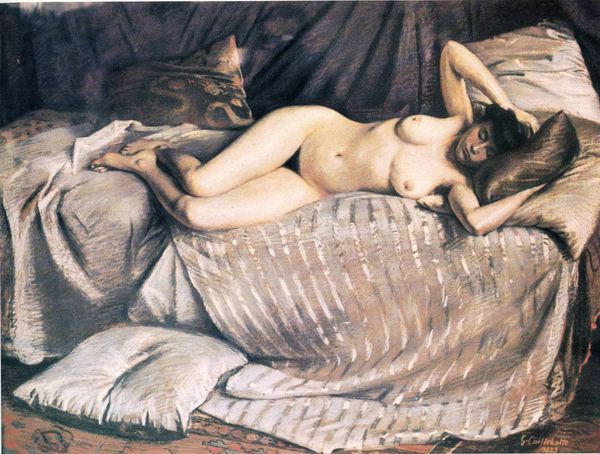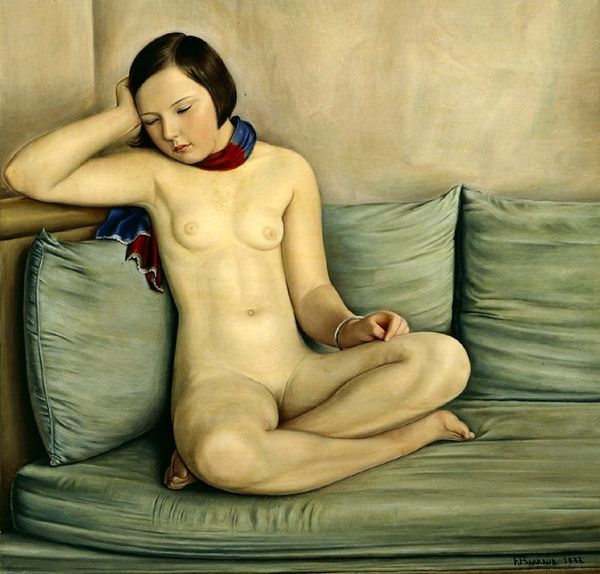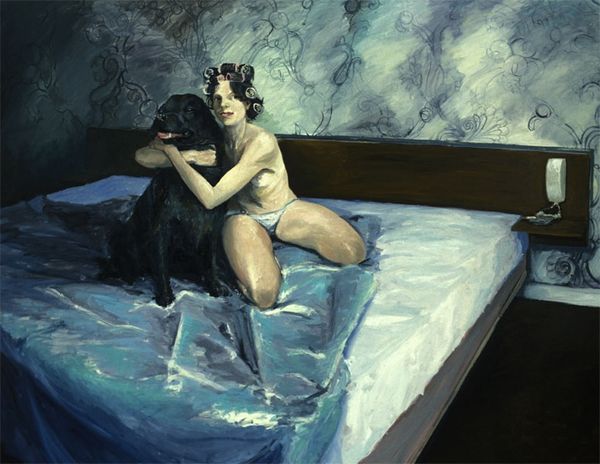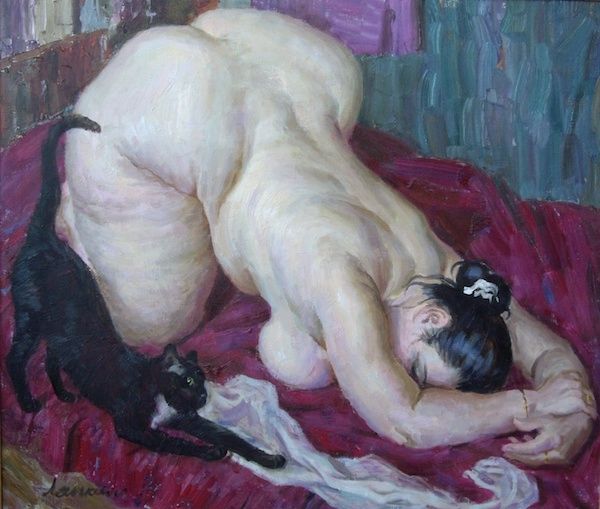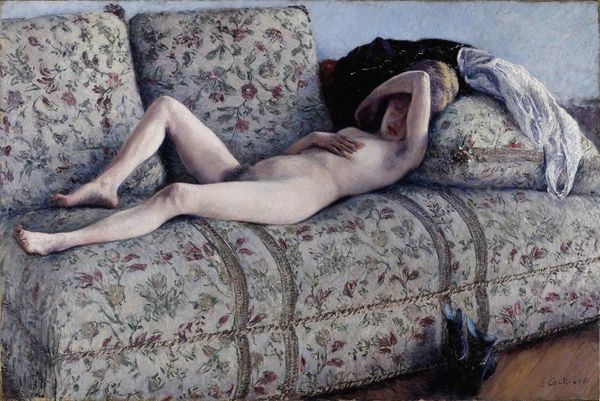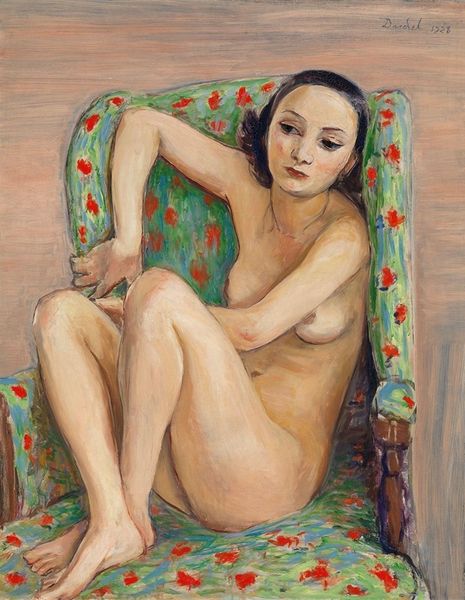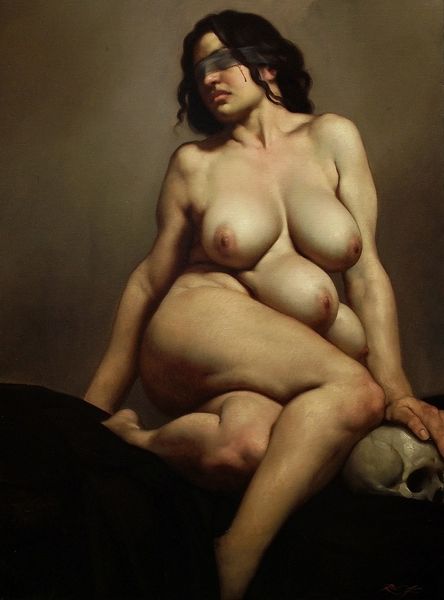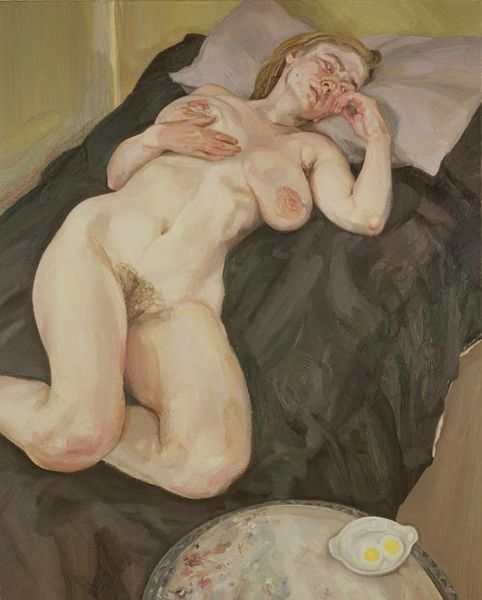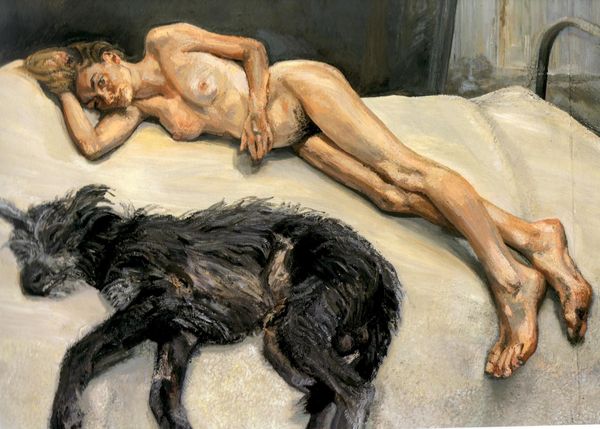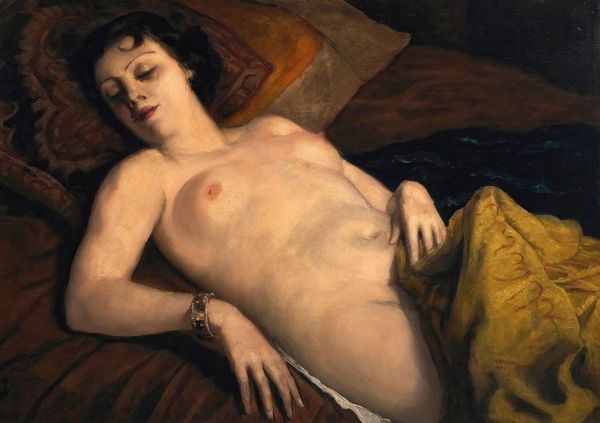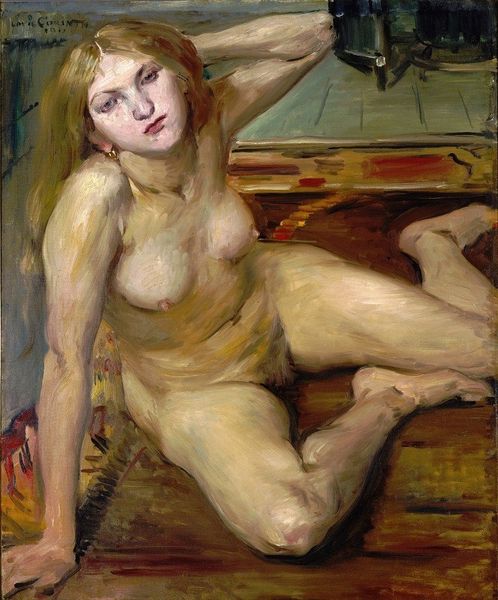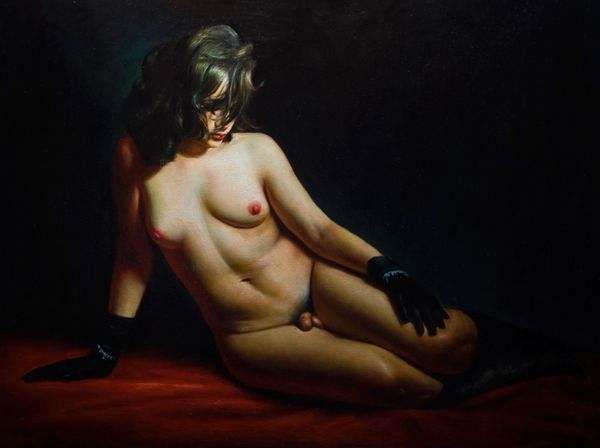
painting, oil-paint
#
portrait
#
painting
#
oil-paint
#
school-of-london
#
figuration
#
nude
#
modernism
#
realism
Copyright: Lucian Freud,Fair Use
Curator: Lucian Freud’s "Girl with a White Dog," completed in 1952, immediately strikes me as a study in vulnerability and unease. What's your initial take? Editor: Isolation. Both the girl and the dog are set apart from the viewer, trapped in a very particular intimacy. There’s something melancholic, almost ghostly, about the pallid palette. The grey dog… what is that? A kind of melancholic Cerberus to her emotional underworld? Curator: The emotional impact resonates deeply when considering Freud’s position within the School of London. It’s worth looking at the social anxiety and the legacy of World War II on British psyche. Nudity, here, isn’t celebratory, but a revealing of self, a post-war existential exposure. This piece really invites reflection on the intersections of trauma, identity, and representation within a specific cultural moment. Editor: The dog seems significant, doesn’t it? Dogs appear throughout art history, symbolizing fidelity and companionship. But this dog is drained of vitality, its grey a visual echo of the girl’s perceived fragility. We get some strong echoes of classical poses here: that drapery almost begs the memory of antique sculptures of reclining figures and the figure with the draped breast—evoking a Venus Pudica. I do wonder, in this modern take, is the artist inviting us to look into questions of authenticity? What is real and what is copied here? Curator: The contrast of stark realism with the symbolic echoes provides an important counterpoint, and I agree that the symbolism is striking. There is a power dynamic here too, in the artist’s male gaze depicting a young, nude woman. Understanding the prevailing views of women’s roles and objectification in mid-20th century art clarifies that this depiction can't be divorced from societal power structures of the era. Her hand gesture, subtly covering herself, echoes societal constraints. Editor: So fascinating, that Freud anchors his very modern experience into those recognizable and lasting symbols: that drape, the pose, the animal companion. Even the subdued color story and realism—are rooted deep into the historic conventions of figure painting. Curator: Yes! Analyzing through an intersectional lens offers insights beyond simple observation. This really provides context for conversations on objectification and the psychological undertones in post-war portraiture. Editor: It all pulls us back to this strange moment caught in paint, an interrogation into reality, image, intimacy, that leaves me unsettled but thinking long after viewing it.
Comments
No comments
Be the first to comment and join the conversation on the ultimate creative platform.
